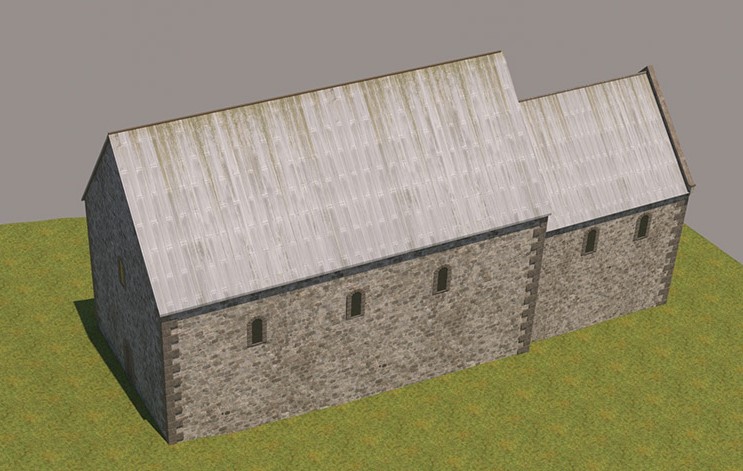Queen Ethelburga founded her church on a chalk bluff, overlooking the spring that is the source of the Nailbourne that flows north along the Elham Valley, joining the Little Stour near Littlebourne. Dominating the site today is the church that was begun towards the end of the 11th Century by Archbishop Lanfranc who at that time held the estate at Lyminge. He built a much larger church than the one built by Queen Ethelburga, and you can still get a sense of its scale because the chancel and nave are still essentially what he built. A tower was added towards the end of the 15th Century, and so was the north aisle, but the ground plan is otherwise Lanfranc's. Another difference is likely to have been how you entered the church. The doorway of Lanfranc's church was almost certainly in the west wall where the tower arch now stands.
The touchscreen display in the church gives visualisations of how the appearance of the church has changed over the last almost one thousand years.
 Visualisation of Lanfranc's church at Lyminge c1090 (© Centre for the Study of Christianity and Culture)
Visualisation of Lanfranc's church at Lyminge c1090 (© Centre for the Study of Christianity and Culture)